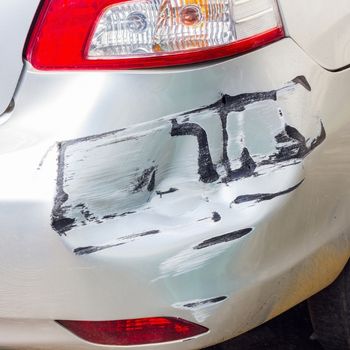 Every year, nearly 2 million rear-end collisions occur on the road, making them the most frequent type of car accident. These incidents can range from minor fender-benders that only need a quick dent repair to more severe cases that impact the frame and body panels.
Every year, nearly 2 million rear-end collisions occur on the road, making them the most frequent type of car accident. These incidents can range from minor fender-benders that only need a quick dent repair to more severe cases that impact the frame and body panels.
One thing remains true for all rear-end collisions: the damage isn't always immediately visible, especially in areas like the trunk. Even a small scratch or dent could signal deeper issues that affect your car's alignment or performance over time.
Over time, these hidden problems can reduce your vehicle’s ability to protect you in a crash, increase wear on other parts, and even raise the risk of another, more serious accident. If you've been involved in a rear-end collision, it's important to take a closer look at your trunk and understand what might be going on underneath the surface.
Potential Trunk Issues After a Rear-End Collision
Even a minor fender-bender can lead to significant problems if not properly assessed. A collision can cause frame misalignment that affects the trunk, which may become a safety hazard. Some common issues include:
- The trunk won’t close fully or securely. Even a light impact can damage the internal components that keep the trunk shut. This can result in the trunk opening while driving, creating a dangerous situation and potentially causing items inside to fall out.
- Dents and water intrusion. Dents on the trunk can trap moisture, increasing the chances of rust and mold forming in the area. This can lead to long-term structural damage and costly repairs.
- Difficulty opening the trunk. Misalignment or damage to the frame or seal can make it hard to open the trunk with your key or the car’s button. Even if you manage to open it, improper closing can leave your car vulnerable to theft.
Beyond affecting daily use, these issues can also lower your car’s resale value. That’s why it’s crucial to check the trunk thoroughly after any rear-end collision.
How to Check Your Trunk After a Rear-End Crash
Most people focus on the bumper when checking for damage after a rear-end collision. However, the trunk is just as important. If you notice dents or deformities on the back of your car, there could be underlying frame or hardware issues that need attention.
Here are some steps you should take when inspecting your trunk:
- Check for gaps or distortion around the trunk area. The trunk should open and close smoothly without any noticeable gaps or overlapping metal. Any irregularities could indicate a problem with the frame or structure.
- Look under the bumper at the rear of the vehicle. Sometimes, a seemingly minor impact can push up the rear rails or trunk area, leading to frame distortion. This can affect alignment and allow moisture to enter, worsening the damage over time.
If you were recently in a rear-end collision, don’t ignore the trunk. Contact DaSilva’s Auto Body for a full inspection. Our expert technicians will assess the damage, recommend necessary auto body repairs, and work directly with your insurance company. Schedule an appointment today to ensure your vehicle is safe and ready to drive.
Gas Fired Roaster,Electric Roasting Furnace,Induction Melting Furance,Induction Heating Machine
Dongying Fuhao Precision Casting Science & Technology Co.,Ltd , https://www.fh-cast.com
